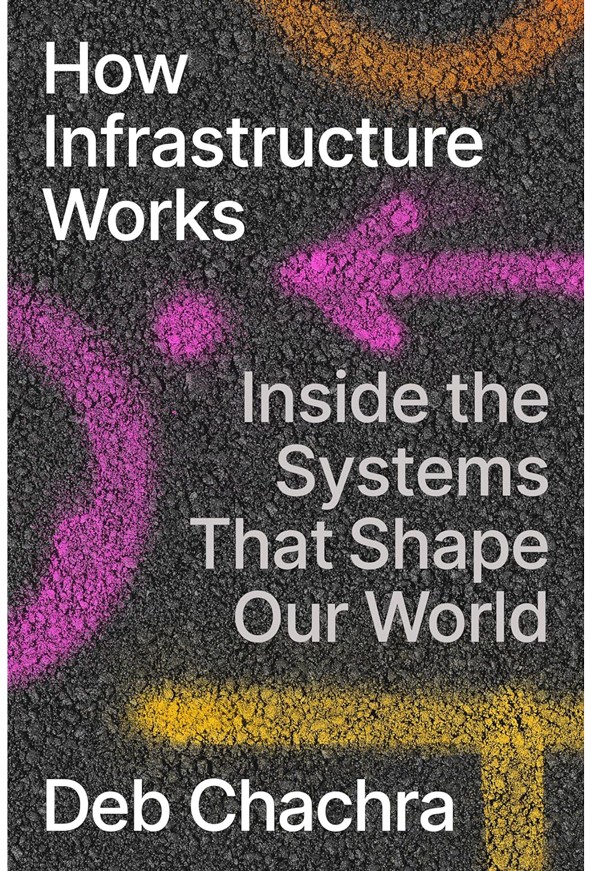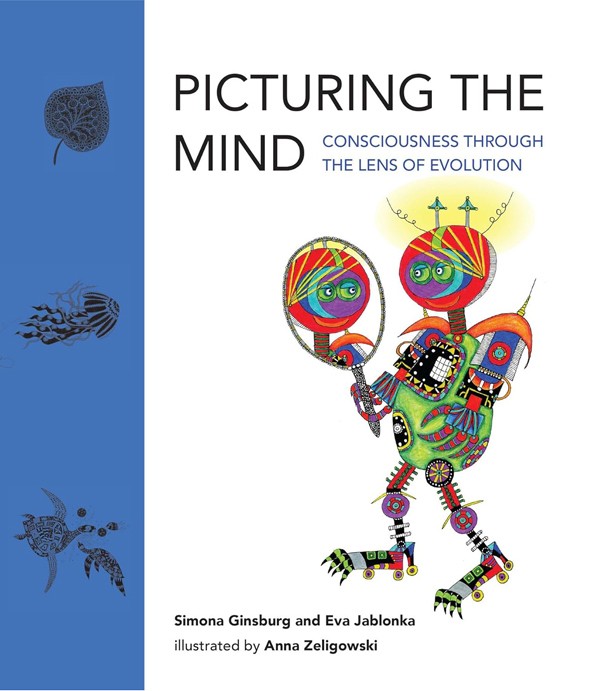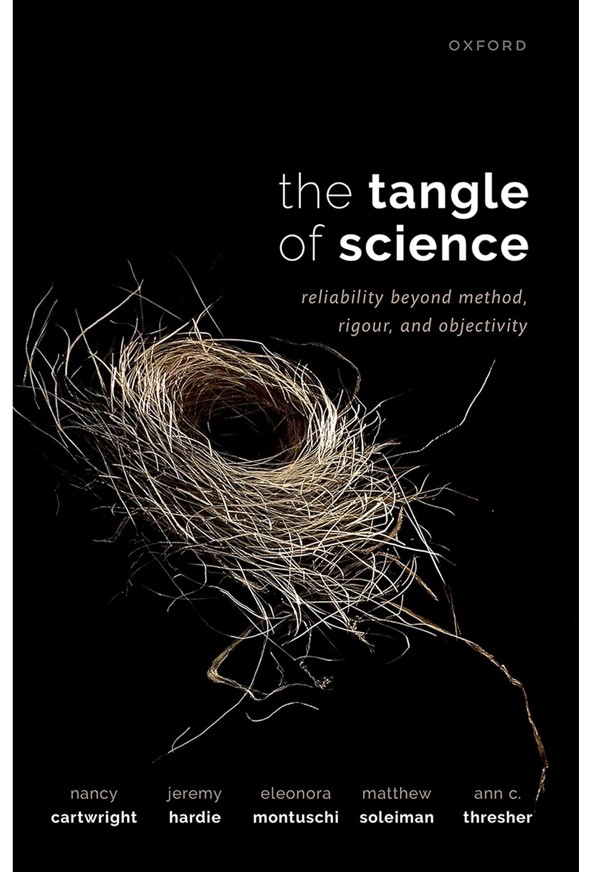Could crabs be conscious, can you beat hypochondria and more: top reads for summer


Marginlands
Arati Kumar-Rao Pan Macmillan (2023)
Climate change will hit hardest the people living in the world’s most fragile landscapes. In Marginlands, photographer and environmentalist Arati Kumar-Rao takes readers on an unforgettable tour through breathtakingly beautiful regions in India, where the harmful effects of ill-planned infrastructure — designed only to accelerate economic growth — are being compounded by the climate crisis.
In the Thar desert, irrigation canals and highways have destroyed the fragile local water table, reducing crucial water supplies for pastoralist communities. Around the Himalayan mountains, ill-conceived construction on steep hill slopes has caused landslides. On the coasts, the rising sea swept away fishers’ homes, while oil and waste spills poisoned fish. And many large rivers have run dry, hemmed in by dams that promised irrigation and plentiful harvests, but delivered little.
Yet, the take-home message lies in Kumar-Rao’s stories of hope. From people rewilding cities one garden at a time, to remote Himalayan villagers creating artificial glaciers to protect their water supply and shepherds passing on ancient wisdom about rainwater harvesting to their communities — across these marginlands, there is a growing resistance to the juggernaut of extractive economics. In this pushback lies the promise of a brighter future. — Harini Nagendra

Ignorance
Peter Burke Yale Univ. Press (2023)
In Ignorance, social and cultural historian Peter Burke uses well-placed humour to explore the numerous ways in which a lack of knowledge has affected both individuals and societies, for good and bad.
Is ignorance always a bad thing, asks the author, citing the theory of ignorance management, in which people recognize what they don’t know and choose to focus on their strengths. It’s a fascinating thought experiment, but should be treated with caution.
The idea of ‘good ignorance’ is anathema to me, as a policy researcher who thinks that knowledge is crucial for governments to make informed decisions. On an individual level, what you do not know cannot make you anxious — ignorance is bliss. But, as Burke notes, collective ignorance can be fatal. Consider the 1986 Chernobyl disaster, which occurred because technicians at the nuclear power plant lacked crucial information. Keeping part of a population ignorant is a common tactic in power battles in business, religion and politics.
This book is a timely reminder that we should be concerned not only with what knowledge there is, but also what ignorance there is. Doing so, ironically, enables us to gain knowledge, helping us to develop. — Rhona Mijumbi

How Infrastructure Works
Deb Chachra Riverhead (2023)
Tiny details of the natural environment can affect how you perceive the world. How Infrastructure Works by engineering professor Deb Chachra will change how you view train departure boards, light switches and spray-painted symbols on the pavement. As Chachra walks readers through familiar landscapes of networks, systems and technologies, she makes the systems mysterious and fascinating once more.
There’s a synchronicity between the complexity of a forest and that of infrastructure such as global telecommunications systems. But infrastructure is fundamentally a product of human culture, comprising a set of decisions about how things should work.
Chachra explores why infrastructures have been set-up to work the way they do — in particular, why they so often function to centralize resources for privileged groups of people.
There’s a real urgency to this book, because our infrastructures — from electrical to transportation systems — are major drivers of climate change. We need a systemic transformation to make our everyday systems more resilient, sustainable and equitable. Chachra thinks that this could be done without reducing our energy consumption, thanks to unrealized developments in renewables. Even if you don’t share her optimism, you’ll be grateful for her perspective. — Kate Crawford

Picturing the Mind
Simona Ginsburg & Eva Jablonka MIT Press (2023)
The groundbreaking 2019 book The Evolution of the Sensitive Soul saw Simona Ginsburg and Eva Jablonka — biologists well known for their philosophical expertise — argue that multicellular organisms must have been conscious at least from the Cambrian Explosion, a burst of evolutionary development that happened 538 million years ago. In Picturing the Mind, the same authors ask: does it follow, then, that all the animals of today that originated in that period, including shrimps and crabs, are conscious? And if so, how can we begin to imagine what that form of consciousness is like?
To visualize possible answers, Ginsburg and Jablonka join forces with artist Anna Zeligowski. The result is astonishing, with each chapter using a mixture of short texts and dazzling illustrations to explore a key question about the conscious experience of humans and other animals. My favourite illustration is an image of a tree made entirely out of the poetic words of fifteenth-century Zen Buddhist monk, Ikkyū Sōjun: “What is the mind? It is the sound of the breeze that passes through the pines in the Indian-ink picture.”
Do you have relatives or friends who think of themselves as good philosophers? This is the best present I can imagine for them. — Denis Noble

Visions of Inequality
Branko Milanović Belknap (2023)
The past 20 years have marked a rebirth in the study of the issue. Those seeking to tackle inequality today should understand how it was viewed in the past, argues leading global-inequality scholar Branko Milanović in Visions of Inequality. The author takes a deep dive into the narratives, theory and data developed by six leading economists — Adam Smith, David Ricardo, Karl Marx, Vilfredo Pareto, Simon Kuznets, and François Quesnay — whose work spanned more than three centuries.
Perhaps surprisingly, given his praise of free markets, eighteenth-century economist Adam Smith viewed the accumulation of extreme wealth as corrupt, arguing that the interests of capitalists were not aligned with those of the state. A few decades later, David Ricardo viewed income concentration as being detrimental to economic activity. Karl Marx, for his part, was somewhat indifferent to income inequality, focusing instead on reducing other forms of inequality, through abolition of the class system and private property. All these views, notes Milanović, run counter the neoliberal orthodoxy that took over after the 1970s, which saw any market outcome as fair, and so ceased to see income and class inequality as relevant to economic analysis.
Milanović’s book is a must-read for anyone interested in inequality and how economists have interpreted it throughout history. — Lucas Chancel

Infinite Life
Jules Howard Elliott & Thompson (2024)
Eggs are deceptively complex and extraordinarily diverse — consider the mermaids’ purses laid by sharks, or the crazy-paving shells of dinosaur eggs. Yet, it’s their unifying purpose of protecting the next generation that zoologist Jules Howard examines in his ambitious book Infinite Life.
Howard takes readers on a biographical journey through the evolution of the egg, using gorgeous evocations of species that existed across hundreds of millions of years. Beginning with the resting cysts of the Precambrian oceanic microworld — tiny hibernation pods that enabled microscopic organisms to wait out tough times — he moves to the myriad forms of true eggs. We meet trilobites laying eggs in hexagon-shaped clumps that promote waterflow across their surfaces, and take an astonishing eggs-eye-view tour through the internal anatomy of birds. More broadly, Howard shows how innovations in the form and function of eggs drove evolution. For example, a few genetic mutations in insect eggs created an entirely new life stage: larvae.
Carving out a niche in the increasingly crowded milieu of popular-science writing can be difficult, but Infinite Life stands out. It’s a satisfyingly nerdy examination of eggs, rooted in an unashamed affection for this unlikely spectacle of nature. — Rebecca Wragg Sykes

The MANIAC
Benjamín Labatut Pushkin (2023)
Since the birth of Mary Shelley’s Dr. Frankenstein, novelists have explored the inhuman face of science and the demonic aspects of technological progress. With The MANIAC — a semi-biographical triptych on this theme — Benjamin Labatut sets a new standard in the genre.
At the book’s heart is the story of genius John von Neumann, who, between 1920 and 1955, made seminal contributions to mathematics, quantum mechanics and economics. He is perhaps best known for being the architect of early computers — the MANIAC was one of the first computers built, and was based on von Neumann’s work. But he could switch, at the drop of a hat, from game theory to linear programming to hydrodynamics and more. He loved poker, parties and mingling with Washington’s top brass, and he dabbled with equal ease in nuclear death and artificial life.
Labatut is uncannily well versed in the history of science, and turns it into great art, rearranging facts and quotes to form his astounding novel. Through many narrators, including von Neumann’s mother, wives, friends and colleagues, he paints a picture of a life hurtling towards an ever-creepier future dominated by artificial intelligence: “a progress”, as von Neumann noted, “for which there is no cure”. The kaleidoscope of different perspectives serves admirably to convey von Neumann’s sparkling life, and its delirious ending. — Karl Sigmund

Wild Girls
Tiya Miles W. W. Norton (2023)
Wild Girls, by public historian Tiya Miles, opens with the story of “woodswoman” Harriet Tubman, whose ecological and botanical expertise and experience in the outdoors — including an understanding that waters generally ran north to south and an ability to identify the North Star — helped her to escape slavery in Maryland in 1849. Tubman’s story acts as the jumping-off point for a powerful guide of some of the many women in the United States of Black or African American, Native American and Euro-American backgrounds who were subjected to confinement, but managed to break out, often thanks to a knowledge of navigation or nature.
Miles highlights the influence of nature on the work of educator and activist Anna Julia Cooper, who founded what was probably the first outdoor club for girls in the United States led by an African American. She explores how the science-fiction writer Octavia Butler was influenced by Cooper’s early work as an environmental writer and climate-change activist. And she examines the often-mistold and romanticized histories of the Native American Pocahontas and Sacagawea, whose knowledge of outdoor spaces and local ecologies was co-opted by European and American colonists, largely without compensation. — Beronda L. Montgomery

A Body Made of Glass
Caroline Crampton Ecco (2024)
Diagnosed with blood cancer as a teenager, now-cured Caroline Crampton lives uncomfortably, knowing that her body could betray her once more. She considers every lump or episode of fatigue as a symptom of some as-yet-undiscovered disease. In A Body Made of Glass, Crampton slips between medical history, literature and science as she explores the notion of hypochondria, concluding that anxieties around illness are often unresolvable.
For many, Crampton’s musings will be both familiar and comforting. Symptoms such as chronic fatigue or pain can be serious and debilitating, but cannot be medically proven. Having pain be discounted by others is common, as is mistrust of one’s own lived experience.
Crampton’s reflection is timely. Expanding technologies and online (mis)information provide people with many opportunities to identify potential threats — real and imagined — to their health. And medical ‘information’ from non-experts on social media can exacerbate fears about what interventions, such as vaccines, might do to our bodies. As the author notes, these phenomena mean that health anxieties can easily come to define our core identity, and now increasingly shape what it means to be human. — Alexandra Brewis

The Tangle of Science
Nancy Cartwright et al. Oxford Univ. Press (2023)
Science tends to work on the premise that three principles — sound methods, rigour and objectivity — together ensure that the discoveries that researchers make are reliable. Not so, argue five philosophers and historians of science in The Tangle of Science. The reality is more complex, because these practices are inexorably enmeshed with many products of science: everything from pipettes and computers to models and experimental designs. Good practices rely on and lead to good products and vice versa.
The authors contend that understanding this interplay — and recognizing that a scientific finding is only as good as the “virtuous tangle” of products on which it is founded — is crucial to doing reliable science. The important question is how to accredit the products that make up that tangle.
The authors apply their thesis to diverse topics, from the history of science to gravitational waves, and show that it is applicable to key topics in modern society. They demonstrate how the tangle of evidence, explanations and theory can be affected by personal priorities and by conflict, leading to complications in issues as diverse as brokering peace and treating bacterial infections. Despite this, they argue that a tangle can, in fact, act as a network of constraints that, if considered properly, makes failures less likely to happen. — Timiebi Aganaba









